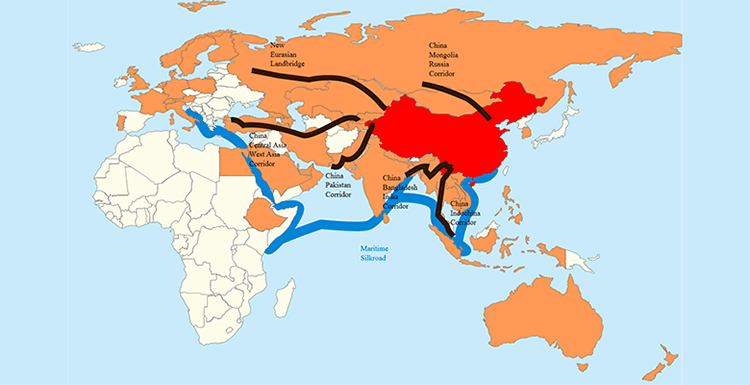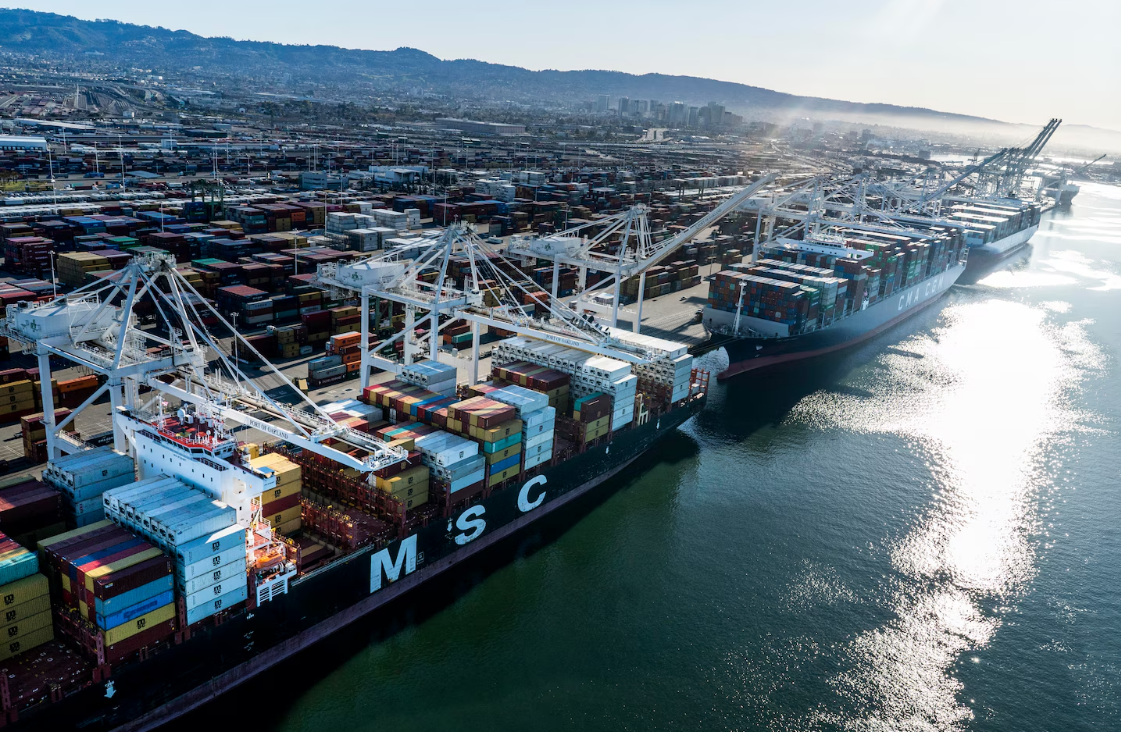China’s Belt And Road Initiative: A Dual Environmental Menace To Climate And Biodiversity
SYNOPSIS
China is a major global player that presents a dual environmental threat. Despite being the largest greenhouse gas emitter, it prioritizes economic growth over climate concerns. Following the expiration of a coal ban, the alarming threefold increase in new coal-power construction in 2020, underlines its gross disregard for global climate goals. As the world’s primary financier of fossil fuel infrastructure through the Belt and Road Initiative (BRI), China’s support exacerbates global climate challenges, potentially surpassing the limits set by the Paris Agreement. Moreover, China’s extensive infrastructure initiatives, notably the BRI, contribute to biodiversity loss, imperilling ecosystems and endangered species. The lack of transparency in hydropower project financing, coupled with inadequate safeguards, amplifies ecological risks. China’s reluctance to align with international climate efforts poses a formidable obstacle, jeopardizing not only its 1.4 billion citizens but the entire planet’s ecological stability.
The UN climate summit began in Dubai on November 30th with a pleasant surprise. Wealthy nations surprised everyone by offering significant financial assistance to help poorer countries deal with the devastating consequences of climate change. This unexpected show of support puts additional pressure on countries like China to follow suit and contribute financially to the cause.
The focus will now shift to countries like China, a global economic powerhouse, and Saudi Arabia and Qatar, smaller nations with significant wealth. Despite their impressive economic growth in recent years, all three are still classified as “developing countries” within the U.N. climate framework.Developing nations tend to prefer the established categorization system, even though it relies on an outdated framework for classifying countries based solely on wealth. Meanwhile, developed countries like the US and those in Europe are urging high-polluting emerging economies to step up and contribute financially, aiming to expand the pool of donors as funding needs escalate.
The development came along the expected lines. A 31 October report in China Dialogues had noted that China was expected to face mounting pressure at the upcoming UN Climate Change Conference (COP28) on two key fronts: strengthening its climate action and contributing to a fund that compensates developing nations for the unavoidable consequences of climate change.
In a recent push for climate action, the EU urged China to join the Global Methane Pledge, established during COP26 in Glasgow, and commit to tripling renewable energy deployment by 2030, as outlined in the G20 New Delhi Leaders’ Declaration. Additionally, the US called on China to contribute to multilateral climate finance initiatives, which China has previously resisted based on its self-designation as a developing nation exempt from such obligations under the UN climate process.
Experts predict China will resist calls for a swift end to fossil fuels at the upcoming COP28 climate conference. Chris Aylett, a UK environmental specialist, believes China is unlikely to accept the language of “phaseout” favoured by the EU and other nations. This aligns with China’s official stance, as expressed by Xie Zhenhua, their climate envoy, who deems a complete phaseout “unrealistic.” China’s approach stems from the 2021 energy crisis, where widespread power outages crippled 44% of industrial activity. This experience has instilled a “new-before-old” principle in their energy policy. They prioritize building a robust low-carbon system before dismantling existing fossil fuel infrastructure. This cautious approach reflects China’s desire to avoid economic disruptions while transitioning to a cleaner energy future.
Meanwhile, there are charges that China’s infrastructure initiatives are a major cause of biodiversity loss in quite a few countries. In the lush Batang Toru ecosystem of North Sumatra, Indonesia, lives a critically endangered species of great ape: the Tapanuli orangutan. In 2018, their fragile existence became even more precarious with the looming threat of the Chinese-funded Batang Toru hydropower dam. This project, just one of 49 hydropower dams China is funding across Southeast Asia, Africa, and Latin America, poses a significant risk to the orangutan’s habitat, threatening to fragment and submerge vast swathes of their already dwindling home.
While hydropower is anticipated to play a vital role in the global shift to renewable energy, concerns regarding its environmental impact persist. Dams disrupt the natural flow of rivers, altering the habitats of countless species, while the construction of reservoirs inundates and fragments land-based ecosystems. Traditionally, Western-backed multilateral development banks dominated the financing of hydropower projects in developing countries. However, China has recently surpassed them, becoming the largest international financier of such projects through its Belt and Road Initiative (BRI), an ambitious overseas infrastructure investment programme.
The extent of China’s involvement in financing hydropower projects and the associated biodiversity risks remain largely unknown. This lack of transparency extends to the adequacy of safeguards implemented by both Chinese and host country regulators. A researcher from the University of Queensland writing in the Conversation observed that China is currently financing 49 hydropower dams across 18 countries, including Myanmar, Laos, and Pakistan. These dams pose a significant threat to the ecological health of 14 free-flowing rivers, jeopardizing the diverse species that rely on these vital waterways. The construction of the first dam on a free-flowing river can be likened to the “first cut” through an untouched forest ecosystem, triggering a disproportionate cascade of harm to biodiversity.
The same research identified an alarming overlap between Chinese-funded dams and the geographic ranges of 12 critically endangered freshwater fish species. These include iconic species such as the Mekong Giant Catfish and the Giant Barb, the world’s largest carp. The construction of these dams further exacerbates the threats facing these vulnerable species, potentially pushing them closer to the brink of extinction.
Despite the significant risks to biodiversity posed by Chinese-funded dams, investigation by the team of the University of Queensland researchers uncovered serious flaws in the environmental regulations governing these projects. Worryingly, a previous study revealed that six major Chinese state-owned banks, which provide the bulk of financing for the Belt and Road Initiative, lack any safeguards to protect biodiversity from harm. This finding was further corroborated by our investigation, which determined that Chinese regulators also fail to mandate environmental mitigation measures for hydropower projects. While some regulations do include non-binding guidelines, they lack the necessary teeth to ensure effective protection. Additionally, several Chinese government policies simply defer to the environmental laws of host countries. However, our investigation found that in many cases, these countries either lack adequate regulations or are still developing them. This situation leaves vulnerable species and entire ecosystems exposed to potential damage from these dams.
China’s rapid industrialization over the past few decades has come at a steep environmental price, threatening not only the health and livelihoods of its 1.4 billion citizens but also the global fight against climate change. As the world’s largest emitter of greenhouse gases, China’s air pollution is notorious, with carbon-intensive industries exacerbating the issue. Water scarcity and soil contamination add to the challenges while looming threats of flooding and droughts paint a grim picture of climate change’s future impact. China stands at a critical crossroads, where addressing its environmental crisis is no longer just a national imperative, but a global necessity.
China’s rapid economic growth, averaging 10% annual GDP for over a decade, has significantly accelerated its greenhouse gas emissions. In the past ten years, China has surpassed all other nations in annual emissions of carbon dioxide, methane, and nitrous oxide. This dramatic rise is largely attributed to coal, which fuels nearly two-thirds of the country’s energy consumption.
As the world’s largest coal producer and consumer (responsible for half of global consumption), China attempted to curb its reliance on this fossil fuel by banning the construction of new coal-fired power plants in 2016. This led to an initial decline in coal use. However, the ban’s expiration in 2018 triggered a surge in new plant construction. In 2020 alone, China built over three times more new coal-power capacity than the rest of the world combined, accelerating its emissions further.
China is the world’s largest financier of fossil fuel infrastructure, with over 60% of BRI energy financing going towards non-renewable resources. This support contributes to increased greenhouse gas emissions and a global temperature rise beyond the Paris Agreement’s 1.5°C goal. Researchers predict BRI could push the average temperature to a devastating 2.7°C.
Like many other nations, China will suffer from climate change effects like rising sea levels, stronger storms, and more intense heat waves. The country’s average temperature and sea levels are already rising faster than the global average, threatening coastal cities like Shanghai with submersion. 43 million people could be displaced by rising sea levels if the global temperature rises just 2°C. China is no stranger to extreme weather events like heavy rainfall, natural disasters, and melting glaciers. These events are expected to become more frequent and severe with rising temperatures, leading to devastating floods, droughts, and heat waves.
While China may achieve its own internal climate objectives, its international support for non-renewable energy projects through the Belt and Road Initiative (BRI) could significantly hinder global efforts to address climate change, warns Judith Shapiro, co-author of “China Goes Green: Coercive Environmentalism for a Troubled Planet” and a professor at American University. As China stands at a global crossroads, its environmental choices are no longer merely a national concern but a perilous impediment to the collective efforts needed for a sustainable and thriving planet.
In conclusion, China’s relentless pursuit of economic dominance through the Belt and Road Initiative (BRI), its environmental legacy emerges as a dual menace—callously disregarding global climate goals and jeopardizing biodiversity worldwide. The opaque financing of destructive hydropower projects and the stark absence of safeguards reveal a blatant disregard for ecological well-being. China’s flagrant acceleration of coal use, coupled with its status as the largest financier of fossil fuel infrastructure, underscores a perilous trajectory. As the world grapples with climate crises, China’s obstinate stance poses a formidable obstacle, imperilling not only its citizens but the entire planet. It’s a critical juncture demanding urgent global intervention.












